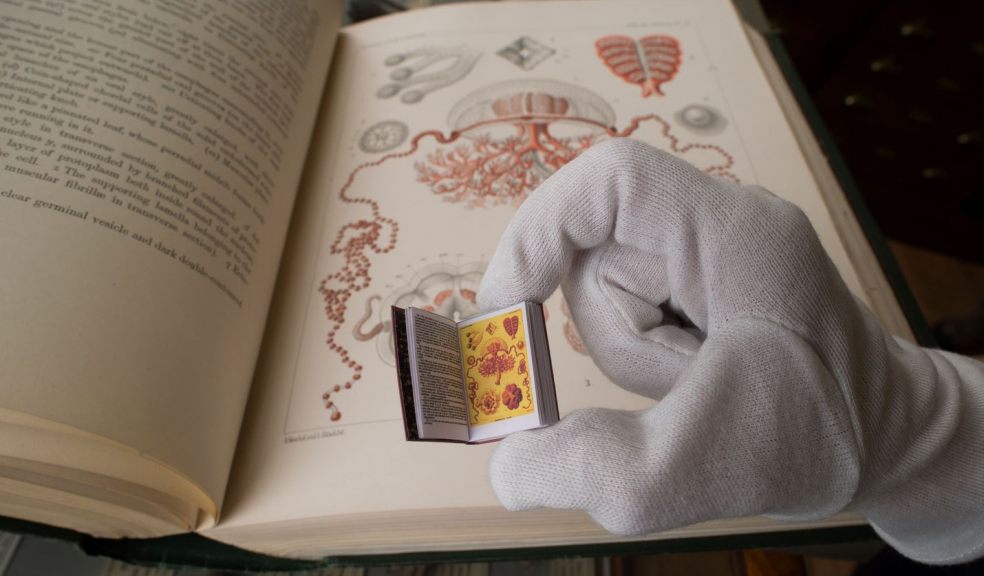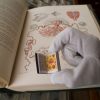
Miniature book records epic journey
One hundred and forty years after samples from one of the world’s greatest journeys of scientific discovery were dispersed to experts across the globe, Exeter’s Royal Albert Memorial Museum is collecting records of the voyage into a single digital database.
The information is still an important source of baseline data and will soon be readily available for further research.
In 1872 chemists, physicists and biologists boarded the HMS Challenger and embarked upon a 70,000 nautical mile journey of global exploration, systematically surveying the geology, topography, biology and chemistry of the deep sea. They returned four years later with a mass of data and thousands of specimens, many of which were sent to leading scientists across the globe. Over 4,000 new species were described and the reports written filled 50 volumes and nearly 30,000 pages. The impact of this epic journey has been wide: it laid the foundation for the science of oceanography, a space shuttle, a lunar module, and a deep sea research vessel were all named after the expedition and it has even been the inspiration for dolls’ house accessories.
Many of the specimens and much of the data are held by National museums and are reasonably accessible. The rest was shared amongst smaller museums and research institutions: 300 echinoderms are included in RAMM’s Sladen collection, for example. In April 2014, RAMM was granted £91,000 from the John Ellerman Regional Museum and Galleries Fund to build an online database of material collected on one of the voyage.
Over 15,600 records and 4,000 images of material from the voyage have so far been collected from museums across the globe including Bristol, Manchester, Leeds and Liverpool in England; Glasgow and Edinburgh in Scotland; and the Museum of Comparative Zoology, Harvard and the California Academy of Science in the USA. The National Museums of both Wales and Ireland have been visited and other global links will be followed; even museums in Australia have specimens collected from the Challenger.
From starfish to butterflies and bryozoans to whale jaws, the records have examples from a wide range of taxonomic groups. While most records come from the animal kingdom, there are plenty of botanical and geological samples and even a few examples of ethnographic material. The database is due to be live later this year.
One surprise discovery was a miniature version of the HMS Challenger Report on the deep-sea medusa (jellyfish) hand crafted by the renowned dolls’ house miniaturist Ken Blythe. In keeping with his normal style, the book includes all the original images and text.
The HMS Challenger project has a blog: https://rammhmschallenger.wordpress.com/. Information about material from the HMS Challenger voyage can be sent to RAMM.HMSChallenger@exeter.gov.uk.

















